Lavender Flowers
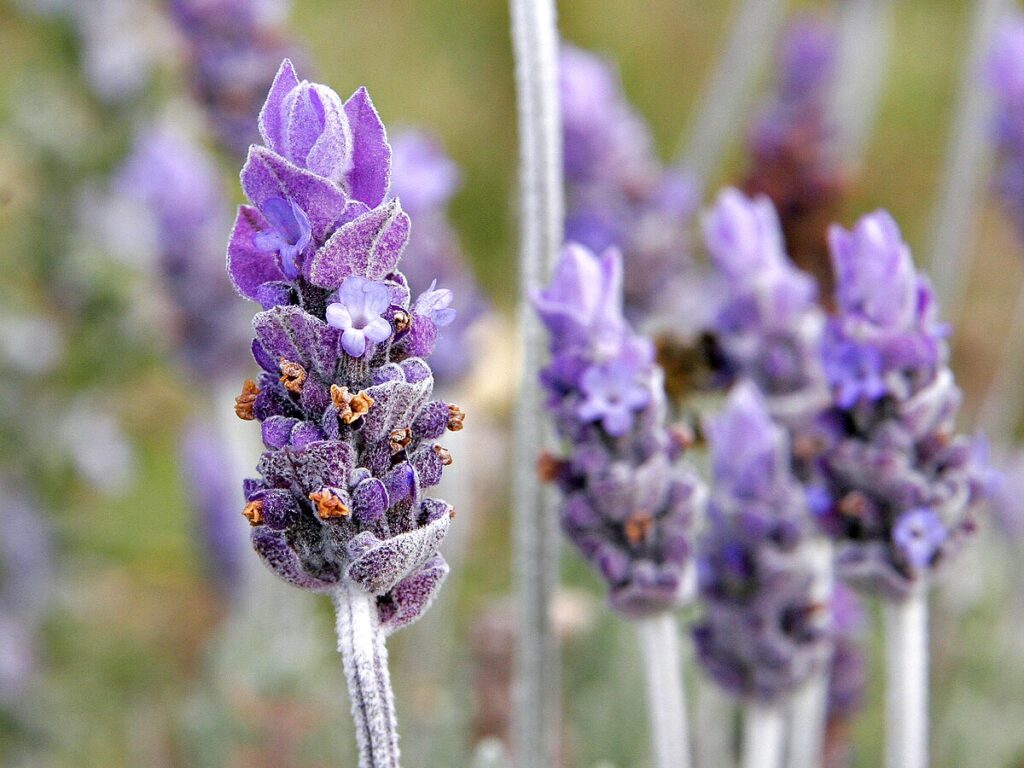
Lavender flowers (Lavandula angustifolia) are cherished for their beauty, fragrance, and therapeutic properties. These small, purple blossoms grow in clusters on slender stems and are widely used in aromatherapy, herbal medicine, and ornamental gardening. Lavender is one of the most popular herbs in the world, known for its calming and soothing effects.
Size:
- Lavender plants typically grow to a height of 12 to 24 inches (30 to 60 cm), although some varieties can reach up to 36 inches (90 cm). The individual flowers are small, around 0.4 inches (1 cm) in diameter, but they grow in dense spikes that can be 2 to 4 inches (5 to 10 cm) long.
Color:
- Lavender flowers are most commonly known for their soft, calming shades of purple, ranging from pale lilac to deep violet. Some varieties may have pink or white flowers. The foliage of the lavender plant is a silvery-green color, providing a striking contrast to the vibrant flowers.
Texture:
- The flowers are soft and slightly fuzzy to the touch, with a velvety texture. The stems are woody, and the leaves are narrow and slightly rough.
Fragrance:
- Lavender is renowned for its strong, sweet, and floral aroma, which has calming and relaxing properties. The fragrance is long-lasting and is often used in perfumes, sachets, and essential oils.
Uses:
- Lavender essential oil is widely used in aromatherapy to promote relaxation, reduce stress, and improve sleep quality. It is commonly used in diffusers, massage oils, and bath products.
- Lavender is used to treat various ailments, including anxiety, insomnia, headaches, and digestive issues. It can be taken as a tea, tincture, or applied topically in creams and balms.
- Lavender flowers are used in cooking, particularly in desserts and beverages. They add a subtle floral flavor to dishes such as lavender honey, ice cream, and lemonade.
- Lavender is a popular choice for gardens due to its beautiful appearance and fragrance. It is often planted in borders, herb gardens, and as ground cover.
Habitat:
- Lavender is native to the Mediterranean region but is now cultivated worldwide. It thrives in well-drained soil with plenty of sunlight.
- Lavender is highly drought-tolerant once established, making it an ideal plant for dry, sunny climates.
Cultural Significance:
- Lavender is often associated with calmness, purity, and serenity. It has been used in religious and spiritual practices to cleanse spaces and promote peace.
- Historically, lavender was used by the ancient Romans and Egyptians in bathing rituals and to scent the air. It has also been used as a protective herb, believed to ward off evil spirits and promote restful sleep.
Spiritual Properties
- Calming Energy: Lavender is revered for its ability to calm the mind and spirit. It is often used in spiritual practices to promote relaxation, reduce anxiety, and create a peaceful atmosphere.
- Purification: Lavender is believed to have purifying properties, both physically and spiritually. It is used in rituals to cleanse spaces, clear negative energy, and promote spiritual healing.
- Protection: Lavender is also considered a protective herb. It is believed to shield against negativity, protect the home, and safeguard one’s emotional well-being.
Medicinal Properties
- Anxiety and Stress Relief: Lavender is widely used to alleviate anxiety, stress, and depression. Its calming effects help reduce tension and promote a sense of well-being.
- Sleep Aid: Lavender is known for its ability to improve sleep quality. It is often used in teas, oils, and pillows to help those suffering from insomnia or restless sleep.
- Pain Relief: Lavender has analgesic properties and can be used to relieve headaches, migraines, and muscle pain. It can be applied topically or inhaled for pain relief.
- Digestive Health: Lavender is beneficial for digestive issues, such as bloating, indigestion, and nausea. It can be taken as a tea or tincture to soothe the digestive tract.
- Skin Care: Lavender’s anti-inflammatory and antimicrobial properties make it effective for treating skin conditions like acne, eczema, and minor burns. It is often used in creams, lotions, and balms.
Adverse Actions & Side Effects
- Allergic Reactions: Some individuals may experience allergic reactions to lavender, including skin irritation, rash, or itching. A patch test is recommended before topical use.
- Hormonal Effects: Lavender oil may have hormone-like effects and should be used with caution in individuals with hormone-sensitive conditions or those undergoing hormone therapy.
Side Effects
- Digestive Discomfort: Ingesting large amounts of lavender may cause digestive discomfort, such as nausea, vomiting, or constipation. It is best to consume lavender in moderate amounts.
- Photosensitivity: Lavender may increase sensitivity to sunlight, leading to a higher risk of sunburn. It is advisable to use sun protection when spending time outdoors.
- Drowsiness: Due to its calming effects, lavender may cause drowsiness or sedation, especially when used in large amounts. It is recommended to avoid operating heavy machinery or driving after using lavender.
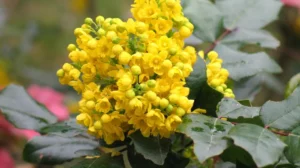
Oregon Grape Root
Oregon Grape Root Oregon Grape Root (Mahonia aquifolium) is a perennial evergreen shrub native to the Pacific Northwest region of North America. It is known
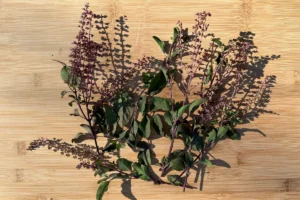
Rama Holy Basil
Rama Holy Basil Rama Holy Basil is a revered herb in Ayurveda and has a significant presence in traditional Indian medicine. Known for its aromatic

Guggul Gum Resin
Guggul Gum Resin Guggul gum resin, derived from the Commiphora mukul tree, has a distinctive appearance. It is typically found in irregular, small to medium-sized
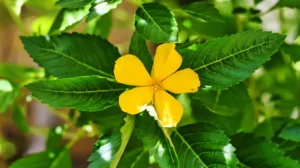
Damiana Leaf
Damiana Leaf Damiana Leaf is an aromatic herb known for its use in traditional medicine, particularly in Central and South America. It is valued for
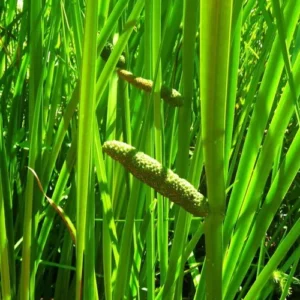
Calamus Root
Calamus Root Calamus Root, derived from the rhizome of Acorus calamus, is a well-known herb in traditional medicine and spiritual practices. Known for its aromatic
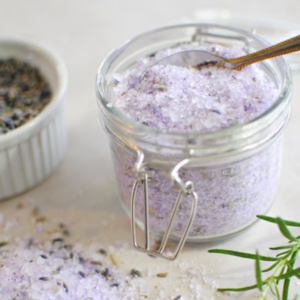
Rosemary & Lavender Healing Bath
Rosemary & Lavender Healing Bath This healing bath is designed to cleanse both the body and spirit. Rosemary and lavender combine to promote relaxation, relieve